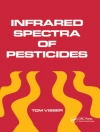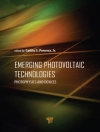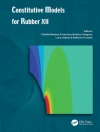Nanoparticles in Catalysis
Discover an essential overview of recent advances and trends in nanoparticle catalysis
Catalysis in the presence of metal nanoparticles is an important and rapidly developing research field at the frontier of homogeneous and heterogeneous catalysis. In Nanoparticles in Catalysis, accomplished chemists and authors Karine Philippot and Alain Roucoux deliver a comprehensive guide to the key aspects of nanoparticle catalysis, ranging from synthesis, activation methodology, characterization, and theoretical modeling, to application in important catalytic reactions, like hydrogen production and biomass conversion.
The book offers readers a review of modern and efficient tools for the synthesis of nanoparticles in solution or onto supports. It emphasizes the application of metal nanoparticles in important catalytic reactions and includes chapters on activation methodology and supported nanoclusters. Written by an international team of leading voices in the field, Nanoparticles in Catalysis is an indispensable resource for researchers and professionals in academia and industry alike.
Readers will also benefit from the inclusion of:
Perfect for catalytic, organic, inorganic, and physical chemists, Nanoparticles in Catalysis will also earn a place in the libraries of chemists working with organometallics and materials scientists seeking a one-stop resource with expert knowledge on the synthesis and characterization of nanoparticle catalysis.
İçerik tablosu
Foreword xiii
1 New Trends in the Design of Metal Nanoparticles and Derived Nanomaterials for Catalysis 1
Alain Roucoux and Karine Philippot
1.1 Nanocatalysis: Position, Interests, and Perspectives 1
1.2 Metal Nanoparticles: What Is New? 4
1.3 Conclusions and Perspectives 8
References 9
2 Introduction to Dynamic Catalysis and the Interface Between Molecular and Heterogeneous Catalysts 13
Alexey S. Galushko, Alexey S. Kashin, Dmitry B. Eremin, Mikhail V. Polynski, Evgeniy O. Pentsak, Victor M. Chernyshev, and Valentine P. Ananikov
2.1 Introduction 13
2.2 Dynamic Catalysis 14
2.3 Interface Between Molecular and Heterogeneous Catalysts 17
2.3.1 Direct Observation of Nanoparticle Evolution by Electron Microscopy 17
2.3.2 Through the Interface – Detection of Molecular Species by Mass Spectrometry 19
2.3.3 Pervasiveness of Nanoparticles and the Problem of Catalytic Contamination 22
2.3.4 Computational Modeling of Dynamic Catalytic Systems 24
2.3.4.1 Equilibrium of Leaching and Recapture 24
2.3.4.2 Modeling Leaching, Recapture, and Transformations in Solution 25
2.3.5 Nanoparticle Catalysis in Solvent-Free and Solid-State Organic Reactions 27
2.3.6 Applications of the Mercury Test and Other Poisoning Techniques in the Nanoparticle Catalysis Studies 30
2.3.6.1 Catalyst Poisoning Techniques and Typical Poisons 30
2.3.6.2 Mercury Test 31
2.3.6.3 Fundamental Limitations of the Catalyst Poisoning Techniques for Dynamic Systems 33
2.4 Summary and Conclusions 34
References 36
Part I Nanoparticles in Solution 43
3 Metal Nanoparticles in Water: A Relevant Toolbox for Green Catalysis 45
Audrey Denicourt-Nowicki, Natalia Mordvinova, and Alain Roucoux
3.1 Introduction 45
3.2 Protection by Ligands 46
3.2.1 Hydrogenation Reactions 46
3.2.1.1 Phosphorous Ligands 46
3.2.1.2 Nitrogenated Ligands 47
3.2.1.3 Carbon Ligands 49
3.2.2 Suzuki–Miyaura Coupling Reactions 50
3.2.2.1 Nitrogenated Ligands 50
3.2.2.2 Carbonaceous and Phosphorous Ligands 51
3.3 Stabilization by Surfactants 51
3.3.1 Hydrogenation Reactions 52
3.3.2 Oxidation Reactions 56
3.3.3 Other Reactions 57
3.4 Stabilization by Polymers 58
3.4.1 Hydrogenation Reactions 58
3.4.2 Carbon–Carbon Coupling Reactions 64
3.4.3 Oxidation Reactions 66
3.5 Conclusions and Perspectives 67
References 68
4 Organometallic Metal Nanoparticles for Catalysis 73
M. Rosa Axet and Karine Philippot
4.1 Introduction 73
4.2 Interests of the Organometallic Approach to Study Stabilizer Effect on Metal Surface Properties 74
4.3 Application of Organometallic Nanoparticles as Catalysts for Hydrogenation Reactions 78
4.3.1 Metal Nanoparticles Stabilized with Phosphorus Ligands 78
4.3.2 Metal Nanoparticles Stabilized with N-Heterocyclic Carbenes 80
4.3.3 Metal Nanoparticles Stabilized with Zwitterionic Ligands 82
4.3.4 Metal Nanoparticles Stabilized with Fullerenes 82
4.3.5 Metal Nanoparticles Stabilized with Carboxylic Acids 84
4.3.6 Metal Nanoparticles Stabilized with Miscellaneous Ligands 86
4.3.7 Bimetallic Nanoparticles 88
4.3.8 Supported Nanoparticles 90
4.4 Conclusions 94
References 95
5 Metal Nanoparticles in Polyols: Bottom-up and Top-down Syntheses and Catalytic Applications 99
Trung Dang-Bao, Isabelle Favier, and Montserrat Gómez
5.1 Introduction 99
5.2 Bottom-up Approach: Colloidal Synthesis in Polyols 100
5.2.1 Ethylene Glycol and Poly(ethylene glycol) 100
5.2.2 Glycerol 105
5.2.3 Carbohydrates 108
5.3 Top-down Approach: Sputtering in Polyols 113
5.4 Summary and Conclusions 117
Acknowledgments 118
References 118
6 Catalytic Properties of Metal Nanoparticles Confined in Ionic Liquids 123
Muhammad I. Qadir, Nathália M. Simon, and Jairton Dupont
6.1 Introduction 123
6.2 Stabilization of Metal Nanoparticles in ILs 124
6.3 Synthesis of Soluble Metal Nanoparticles in ILs 125
6.4 Catalytic Application of NPs in ILs 126
6.4.1 Catalytic Hydrogenation of Aromatic Compounds 127
6.4.2 Coupling Reactions in ILs 130
6.4.3 Hydroformylation in ILs 132
6.4.4 Fischer–Tropsch Synthesis in ILs 133
6.4.5 Catalytic Carbon Dioxide Hydrogenation in ILs 133
6.5 Conclusions 134
Acknowledgments 135
References 135
Part II Supported Nanoparticles 139
7 Nanocellulose in Catalysis: A Renewable Support Toward Enhanced Nanocatalysis 141
Tony Jin and Audrey Moores
7.1 Introduction 141
7.2 Nanocellulose-Based Catalyst Design and Synthesis 143
7.2.1 Synthesis of Suspendable, CNC-Based Nanocatalysts 144
7.2.1.1 Unmodified CNCs as a Support for Metal NPs 144
7.2.1.2 Functionalized CNCs as a Support for Metal NPs 145
7.2.2 Nanocellulose-Based Solid Supports for Metal NPs 146
7.2.2.1 CNC-Embedded Supports 146
7.2.2.2 Functionalized CNFs as a Support for Metal NPs 147
7.2.2.3 Use of CNCs as a Source for Carbon Supports 147
7.3 Organic Transformations Catalyzed by Metal NP/nanocellulose Hybrids 148
7.3.1 C–C Coupling Reactions 148
7.3.2 Reduction Reactions 151
7.4 Conclusions 154
References 154
8 Magnetically Recoverable Nanoparticle Catalysts 159
Liane M. Rossi, Camila P. Ferraz, Jhonatan L. Fiorio, and Lucas L. R. Vono
8.1 Introduction 159
8.2 Magnetic Support Material 161
8.2.1 Magnetite Coated with Silica 163
8.2.2 Magnetite Coated with Ceria, Titania, and Other Oxides 165
8.2.3 Magnetite Coated with Carbon-Based Materials 166
8.3 Preparation of Magnetically Recoverable Metal Nanoparticle Catalysts 167
8.3.1 Immobilization of Metal Precursors Before Reduction 167
8.3.2 Decomposition of Organometallic Precursors 170
8.3.3 Immobilization of Colloidal Nanoparticles 172
8.3.4 Influence of Ligands on Catalytic Properties 173
8.4 Summary and Conclusions 176
References 176
9 Synthesis of MOF-Supported Nanoparticles and Their Interest in Catalysis 183
Guowu Zhan and Hua C. Zeng
9.1 Introduction 183
9.2 General Synthetic Methodologies 185
9.2.1 Catalytic Properties of Metal Nanoparticles 185
9.2.2 Synthetic Strategies of Metal Nanoparticles 187
9.2.2.1 Wet Chemical Reduction Method 187
9.2.2.2 Metal Vapor Condensation/Deposition Method 187
9.2.2.3 Electrochemical Method 188
9.2.2.4 Biosynthesis Method 188
9.2.3 Catalytic Activity and Catalytic Sites of MOFs 188
9.2.4 Porosity of MOFs for Catalysis Applications 189
9.2.5 Synthetic Strategies of MOFs 190
9.2.5.1 Electrochemical Method 191
9.2.5.2 Sonochemical Method 191
9.2.5.3 Microwave Irradiation Method 192
9.2.5.4 Mechanochemical Method 192
9.2.5.5 Synthesis of MOFs in Green Solvents 192
9.2.5.6 Microemulsion Method 193
9.2.5.7 Transformation from Solid Matters to MOFs 193
9.2.6 Integration Methods of MNPs with MOFs 194
9.2.6.1 Preformation of MNPs and Growth of MOFs 195
9.2.6.2 Incorporation of Metal Precursors Followed by in Situ Reduction 197
9.2.6.3 One-pot Integration of MOFs and MNPs 199
9.3 Architectural Designs and Catalytic Applications of MNP/MOF Nanocomposites 200
9.3.1 Zero-Dimensional MNP/MOF Nanocomposites 201
9.3.2 One-Dimensional MNP/MOF Nanocomposites 201
9.3.3 Two-Dimensional MNP/MOF Nanocomposites 203
9.3.4 Three-Dimensional MNP/MOF Nanocomposites 203
9.3.5 Other Representative Structures of MNP/MOF Composites 205
9.3.5.1 Core–Shell/Yolk–Shell Nanostructures 205
9.3.5.2 Sandwich-like Nanostructures 206
9.3.5.3 Formation of Nanoreactors with a Central Cavity 208
9.4 Summary and Conclusions 208
References 210
10 Silica-Supported Nanoparticles as Heterogeneous Catalysts 215
Mahak Dhiman, Baljeet Singh, and Vivek Polshettiwar
10.1 Introduction 215
10.2 Deposition Methods of Metal NPs 216
10.2.1 Wet Impregnation Method 216
10.2.2 Deposition–Precipitation Method 217
10.2.3 Colloidal Immobilization Method 218
10.2.4 Solid-State Grinding Method 219
10.2.5 Postsynthetic Grafting Method 220
10.3 Application of Silica-Supported NPs in Catalysis 221
10.3.1 Oxidation Reactions 221
10.3.1.1 CO Oxidation 221
10.3.1.2 Alcohol Oxidation 222
10.3.1.3 Hydrolysis of Silane 224
10.3.2 Hydrogenation Reactions 226
10.3.3 Carbon–Carbon (C–C) Coupling Reactions 230
10.4 Conclusion 234
References 235
Part III Application 239
11 CO2 Hydrogenation to Oxygenated Chemicals Over Supported Nanoparticle Catalysts: Opportunities and Challenges 241
Qiming Sun, Zhenhua Zhang, and Ning Yan
11.1 Introduction 241
11.2 CO2 Hydrogenation into Formic Acid 242
11.3 CO2 Hydrogenation to Methanol 247
11.4 CO2 Hydrogenation to Dimethyl Ether 250
11.5 Perspectives and Conclusion 252
Acknowledgment 253
References 253
12 Rebirth of Ruthenium-Based Nanomaterials for the Hydrogen Evolution Reaction 257
Nuria Romero, Jordi Creus, Jordi García-Antón, Roger Bofill, and Xavier Sala
12.1 Introduction 257
12.2 Relevant Figures of Merit 258
12.3 Factors Ruling the Performance of Ru-Based NPs in HER Electrocatalysis 261
12.3.1 Surface Composition 262
12.3.2 Phase Structure and Degree of Crystallinity 265
12.3.3 Influence of the C Matrix or the C-Based Support 266
12.3.4 Influence of Heteroatoms 270
12.3.4.1 Phosphorous 270
12.3.4.2 Metals and Semimetals 272
12.4 Factors Ruling the Performance of Ru-Based NPs in HER Photocatalysis 272
12.5 Summary and Conclusions 274
Acknowledgments 275
References 275
13 Nanocatalytic Architecture for the Selective Dehydrogenation of Formic Acid 279
Ismail B. Baguc, Gulsah S. Kanberoglu, Mehmet Yurderi, Ahmet Bulut, Metin Celebi, Murat Kaya, and Mehmet Zahmakiran
13.1 Introduction 279
13.2 Monometallic Palladium-Based Nanocatalysts 282
13.3 Bimetallic Palladium-Based Nanocatalysts 286
13.3.1 Bimetallic Pd-Containing Nanocatalysts in the Physical Mixture Form 286
13.3.2 Bimetallic Pd-Containing Nanocatalysts in the Alloy Structure 287
13.3.3 Bimetallic Pd-Containing Nanocatalysts in the Core@Shell Structure 291
13.3.4 Trimetallic Pd-Containing Nanocatalysts 294
13.3.5 Other Pd-Free Nanocatalysts 297
13.4 Summary and Conclusions 301
Acknowledgments 302
References 302
Part IV Activation and Theory 307
14 Magnetically Induced Nanocatalysis for Intermittent Energy Storage: Review of the Current Status and Prospects 309
Julien Marbaix, Nicolas Mille, Julian Carrey, Katerina Soulantica, and Bruno Chaudret
14.1 Introduction 309
14.2 General Context and Historical Aspects 310
14.3 Characteristics of the Nanocatalysts Used in Magnetic Hyperthermia 312
14.3.1 Metal Oxide Nanomaterials 312
14.3.2 Iron (0) Nanoparticles 312
14.3.3 Iron Carbide Fe(C) Nanomaterials 312
14.3.4 Bimetallic Fe Ni Nanoparticles 313
14.3.5 Bimetallic Fe Co Nanoparticles 313
14.3.6 Co Ni Nanoparticles 314
14.4 Catalytic Applications in Liquid Solution and Gas Phase 314
14.4.1 Gas-Phase Catalysis 314
14.4.1.1 Catalysis Activated by Magnetically Heated Micro- and Macroscaled Materials 314
14.4.1.2 Catalysis Activated by Magnetic Heating of Nanoparticles 316
14.4.2 Catalytic Reactions in Solution 318
14.5 Perspectives 322
14.5.1 Stability of the Catalytic Bed During Catalysis by Magnetic Heating 322
14.5.2 Thermal Management and Process Chemistry Using Magnetic Heating for Catalytic Applications 322
14.6 Perspective of the Integration for Renewable Energy Use 323
14.6.1 Interest of Power to Gas and Catalysis Using Magnetic Heating for Renewable Energy Use 323
14.6.2 Energy Efficiency and Environmental Considerations of Catalysis by Magnetic Heating 324
14.7 Conclusion 326
References 327
15 Sabatier Principle and Surface Properties of Small Ruthenium Nanoparticles and Clusters: Case Studies 331
Iker del Rosal and Romuald Poteau
15.1 Introduction 331
15.2 C–H Activation and H/D Isotopic Exchange in Amino Acids and Derivatives 333
15.2.1 Reference Activation and Dissociation Energies 333
15.2.2 H/D Exchange Mechanism 334
15.2.3 Bare Cluster 336
15.2.4 Ru13D19 338
15.2.5 Ru13Dn, n = 6–17 338
15.2.6 Short Discussion 338
15.3 Hydrogen Evolution Reaction 340
15.3.1 Introduction 340
15.3.2 4-Phenylpyridine-Protected Ru NPs 341
15.3.3 Optimal Ligands for the HER? 344
15.4 Summary 346
15.5 Computational Details 347
Acknowledgments 348
References 348
Index 353
Yazar hakkında
Karine Philippot is Senior Researcher at CNRS and Head of the Engineering of Metal Nanoparticles group at the Laboratory of Coordination Chemistry of Toulouse in France. Her research focus is on the synthesis of metal nanoparticles and derived nanomaterials by applying molecular chemistry concepts, for their application in colloidal or supported catalysis and energy.
Alain Roucoux is Full Professor at the École Nationale Supérieure de Chimie de Rennes and Head of the Nanocatalysis group at the Institut des Sciences Chimiques de Rennes in France. His research area concerns the synthesis of nanoparticles in water and their application in polyphasic catalysis.












